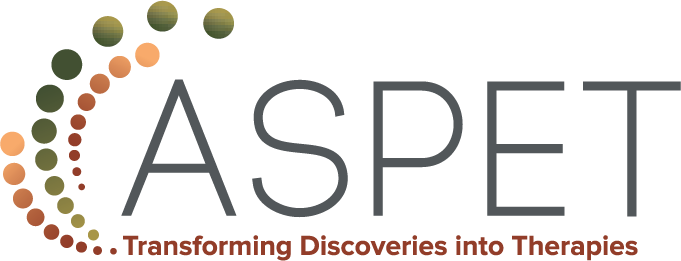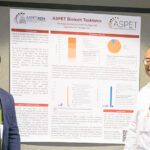A Conversation with ASPET’s Chair, Drug Metabolism and Disposition Division, Kerry Goralski, PhD
 Kerry Goralski, PhD, is professor at College of Pharmacy at the Department of Pharmacology and Department of Pediatrics, Dalhousie University, Halifax, Nova Scotia, Canada. He received his PhD in Pharmacology and Therapeutics at the University of Manitoba. Dr. Goralski currently serves as Chair of ASPET’s Drug Metabolism and Disposition Division. He has served on ASPET’s Nominations Committee and Drug Metabolism and Disposition Editorial Board member. Dr. Goralski has also served as president of the Canadian Society of Pharmacology and Therapeutics. An ASPET member since 1999, Dr. Goralski shares his insight and guidance for young scientists with The Pharmacologist.
Kerry Goralski, PhD, is professor at College of Pharmacy at the Department of Pharmacology and Department of Pediatrics, Dalhousie University, Halifax, Nova Scotia, Canada. He received his PhD in Pharmacology and Therapeutics at the University of Manitoba. Dr. Goralski currently serves as Chair of ASPET’s Drug Metabolism and Disposition Division. He has served on ASPET’s Nominations Committee and Drug Metabolism and Disposition Editorial Board member. Dr. Goralski has also served as president of the Canadian Society of Pharmacology and Therapeutics. An ASPET member since 1999, Dr. Goralski shares his insight and guidance for young scientists with The Pharmacologist.
How did you get started in pharmacology?
During my third year as an undergraduate biochemistry/microbiology student, I attended a pharmacology open house. I was captivated by the presentations and intrigued by the practical applications of pharmacology. It was then that I realized this was the career path I wanted to pursue. That open house led to a summer research position, which eventually developed into a PhD. I’ve been working in pharmacology ever since.
How did you first get involved with ASPET?
As a graduate student, I was an active member of the Pharmacological Society of Canada and regularly attended the annual Canadian Pharmacology meeting. When I began my postdoctoral fellowship, I was eager to broaden my international pharmacology network and experience, so I joined ASPET. I’ve been a proud ASPET member for 25 years.
What do you want the ASPET membership to know about you and your ideas on how to move the organization forward during your term?
I am the current Chair of the Division of Drug Metabolism and Disposition (DMDD). Priorities for my term include developing strategies with Division executives and ASPET to advance IDEA within the society. Expanding programs like awards and trainee activities at the annual meeting and virtual focus on pharmacology sessions will contribute to these goals. I also believe a key opportunity to strengthen ASPET and grow its membership is to improve connections with national and international ASPET Chapters, which can be achieved by implementing the recent recommendations from the ASPET Chapters Task Force.
What has been your proudest accomplishment in your career so far?
My proudest scientific achievement was discovering chemerin as a new protein secreted by adipose tissue (adipokine). It was exciting to contribute to the early characterization of chemerin and to the foundational understanding of adipose tissue as an endocrine organ, which was just gaining wider recognition at the time. However, what I am most proud of is the opportunity to mentor and train young scientists in pharmacology, watching them go on to successful careers in the field.
What advice would you give young scientists who are just starting out in their careers?
Take advantage of the diverse skills and experiences that pharmacology training offers. Along the way, discover the area of research you’re most passionate about, and pursue it wholeheartedly.

